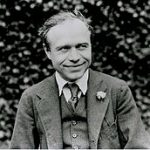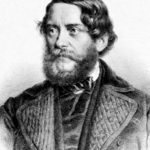Thomas Edward Laurence was born in 1888, the son of Thomas Chapman, a member of a distinguished Anglo-Irish family. Thomas had eloped with his daughter’s governess, and settled in Oxford after adopting the name of Laurence. His son gained a First Class Degree in History at the University, and became an enthusiastic archaeologist wen he undertook to make excavations in Syria and Mesopotamia between 1910 and 1914. He learned desert lore from the many Arab friends he made on these scientific expeditions.
He joined British Military Intelligence in 1915 and was promoted to Second Lieutenant. The War Office never misses a thing, and Laurence’s brain was quickly noticed. The mystic subaltern soon found himself in Jedda (December 1916), where this raw young man who already spoke fluent Arabic, joined Husayn, Sharif of Mecca and his son Feisal (later King Feisal I) in organising The Arab Revolt against the Turkish hordes. The Great War had begun in 1914, and among Britain’s enemies was Turkey. The Army accepted Laurence’s eccentricities of dress and comportment, partly because it was told to do so by the British Government especially Winston Churchill who was a fan. He knew Laurence and understood his peculiar genius.
A master in guerilla tactics, he took to wearing Arab clothes as a matter of course, and soon learned how to ride and keep camels. The Arabs simply accepted him, an infidel, as another bedouin.
The Arabs were no more or less bloodthirsty than Laurence; his military excursions included raids on the Damascus-Medina railway, with conquests of the key centres of contact with the Allied base in Egypt. These assaults included a successful attack on Aqaba in July 1917.
It had been Laurence’s idea to attack the city (which was held by the Turks) from the beach side, instead of from the hinterland, which is what the enemy was expecting. Indeed, all the Turkish field guns were trained on the hills and valleys; certainly not on the sea or beach. In order to make this unprecedented assault, Laurence and his Arab chiefs led their makeshift army through appalling desert, where men’s skin peeled off in the midday sun, and temperatures of -5Cº were experienced at night.
Very soon promoted to Colonel by General Allenby, Laurence led the Arabs on the right flank of the General’s Palestine Army, eventually entering Damascus itself in October, 1918. Everything was all right so far, and Laurence’s fame had spread to London and England thanks to astute newspaper correspondents, who travelled (and sometimes fought) with him. Laurence was a vain man, and liked to have himself photographed in his shining white robes standing by or on wrecked trains, with corpses all around for decoration.
After Damascus, Laurence considered the generals had betrayed him and his cause, which was to unite all the Arab nations as one powerful force. The Peace Treaties were signed (but not by him) and Laurence found that Syria was to be administered as a French mandate. His friends the Arab chiefs and their followers melted away.
Laurence abandoned the Army and returned to England, followed by the eager journalists. He tried to escape them by hiding in a cottage called Clouds Hill, in deepest Dorset, and enlisting in the RAF under the rank and name of Aircraftsman Ross. Later this deception was discovered, and he tried again to hide, this time in the name of T.E. Shaw, which he assumed by deed poll in 1927, when he was thirty-nine.
At Clouds Hill he settled down to writing a strange, mystical book, composed in beautiful if fractured English prose, called Seven Pillars of Wisdom. The book was about him, the Arab Revolt, the mysteries of the desert and the nomadic Arabs who inhabit it and are prepared to die for it. The book was privately printed in 1926, seen by interested publishers, and printed (after a good deal of sensible editing) for general circulation in 1935.
Laurence was good looking, but also very short (five foot six inches) which people who had known him in real life found comic when a Hollywood epic starring Peter O’Toole (who is very tall) was made of his campaigns in the desert. Whether or not Laurence was homosexual, as many claim, is not certain, but Laurence certainly approved of corporal punishment. The cottage at Clouds Hill was a centre for flagellants of both sexes. He had himself been mercilessly flogged by a Turkish colonel when he was caught in the desert. Oddly enough, the Turks did not know who he was, and after his punishment he was allowed to leave the Turkish barracks.
Laurence of Arabia was killed in a motor bicycle accident in Dorset in 1935.










Leave A Comment